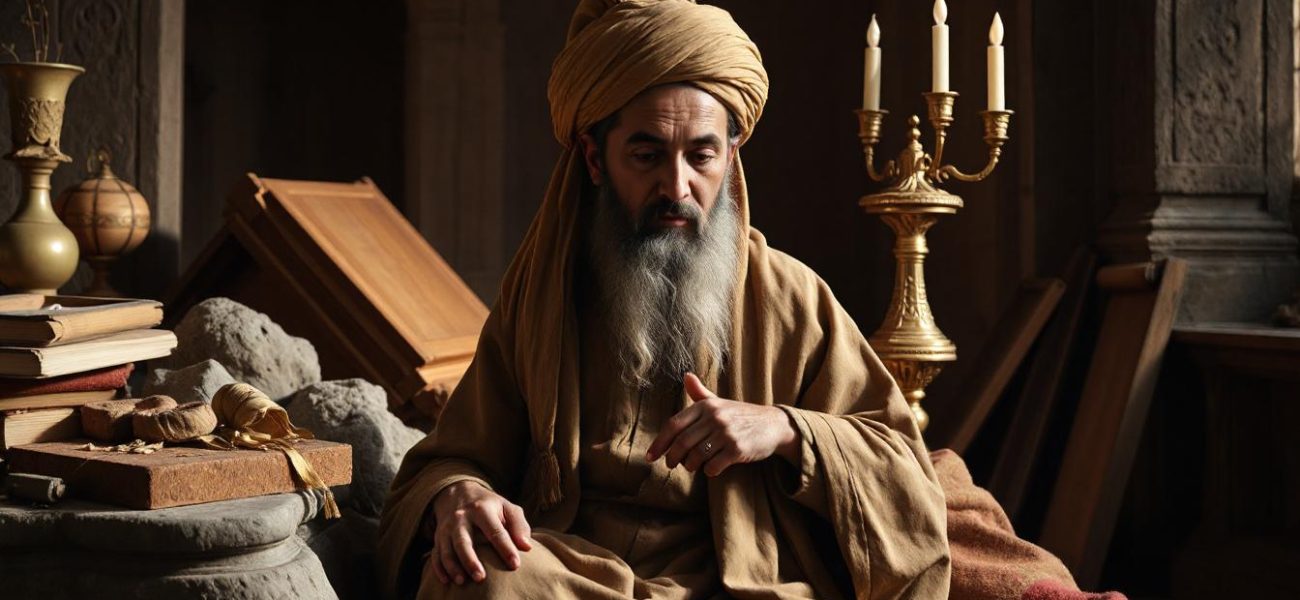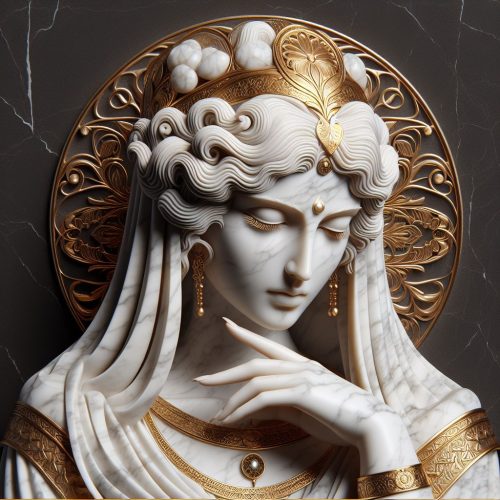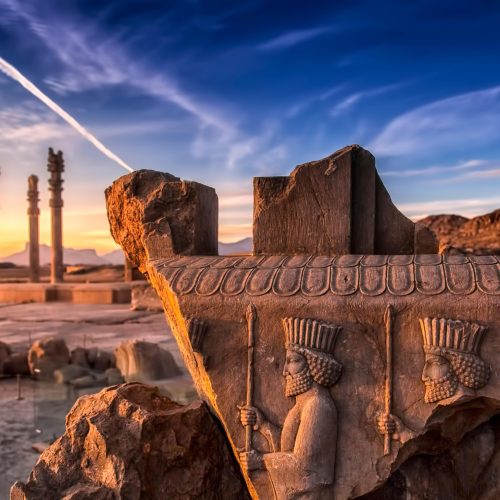By Dr. Fereshteh Mohtadi Professor of Persian Literature, University of Tehran
In the garden of Persian civilization, where poetry blooms like spring roses and wisdom flows like crystal streams, there stands a towering cypress tree whose shadow has stretched across a millennium – Omar Khayyam. As I write these words from my study in Tehran, watching the sunset paint the sky in hues that would have inspired the master himself, I cannot help but marvel at how this 11th-century sage continues to captivate minds and hearts across the centuries.
To speak of Khayyam is to speak of paradox itself – the mathematician who wrote of wine, the astronomer who contemplated mortality, the philosopher who found profound truth in simple earthen vessels. In our modern Iran, where his words echo in every gathering of intellectuals and his spirit lives in the very essence of our cultural identity, we must ask ourselves: What makes this polymath of Nishapur so eternally relevant?
As both a scholar of Persian literature and a poet who has spent decades studying Khayyam’s works, I find myself returning again and again to the magnificent tapestry of his life, where threads of science, philosophy, and poetry interweave to create a pattern of rare beauty and complexity.
The Garden of Numbers and Stars
Before we speak of his poetry, we must acknowledge Khayyam’s towering achievements in mathematics and astronomy. In the quiet corners of the Nishapur library, young Omar unraveled the mysteries of cubic equations, his mind dancing through geometric proofs with the same grace that would later characterize his rubaiyat. His treatise on algebra, “Treatise on Demonstration of Problems of Algebra,” revolutionized mathematical thinking in ways that still influence modern algebraic theory.
What many fail to realize is how his mathematical precision informed his poetry. When Khayyam writes:
The Moving Finger writes; and, having writ, Moves on: nor all thy Piety nor Wit Shall lure it back to cancel half a Line, Nor all thy Tears wash out a Word of it.
We see not just the poet but the mathematician, understanding the inexorable nature of time with the same clarity he brought to his understanding of numerical sequences. The precision of his imagery mirrors the precision of his mathematical mind.
The Philosopher’s Wine
Perhaps no aspect of Khayyam’s work has generated more controversy than his frequent references to wine. As an Iranian scholar living in an Islamic republic, I must address this with both cultural sensitivity and intellectual honesty. The wine in Khayyam’s poetry serves as a complex metaphor – it is the essence of life itself, the intoxication of divine love, the medium through which ultimate truth might be glimpsed.
When he writes:
Drink wine, for this is life eternal, This is all that youth will give you on this terrestrial ball; This is the season of roses, of wine and friends with happy hearts, Be happy for a moment – this moment is your life!
He is not merely celebrating earthly pleasures but engaging in a profound philosophical discourse about the nature of existence itself. The cup becomes a mirror reflecting the temporary nature of our being, while the wine represents the depth of experience we must embrace in our brief sojourn on earth.
The Scientific Sage
It would be a grave oversight to discuss Khayyam without mentioning his revolutionary work on the calendar. The Jalali calendar, which he helped devise, remains one of the most accurate calendar systems ever created. This achievement perfectly exemplifies the marriage of precision and poetry in Khayyam’s mind – he could measure the movements of celestial bodies with extraordinary accuracy while simultaneously composing verses about the metaphysical implications of time’s passage.
Consider these lines:
Ah, make the most of what we yet may spend, Before we too into the Dust descend; Dust into Dust, and under Dust to lie, Sans Wine, sans Song, sans Singer, and—sans End!
Here, the astronomer’s understanding of cosmic time merges with the poet’s contemplation of mortality. The precision of his scientific mind informs the precision of his verse, creating a unique perspective on existence that resonates across centuries.
The Persian Renaissance Man
In our contemporary Iranian discourse, Khayyam represents something vital – the possibility of being both deeply rooted in tradition while reaching for universal truth. His work embodies what I call the “Persian Renaissance” spirit – that remarkable period when Islamic civilization was at its zenith, and scholars could move freely between disciplines, finding no contradiction between religious faith and scientific inquiry, between mathematical precision and poetic expression.
Khayyam’s genius lies not just in his individual achievements in various fields, but in his ability to synthesize these different modes of understanding into a coherent worldview. When he writes about the futility of human striving or the importance of seizing the moment, he does so not just as a poet but as a mathematician who understands probability, an astronomer who comprehends cosmic scale, and a philosopher who grasps the implications of both.
The Mirror of Modernity
What makes Khayyam particularly relevant to our times is his unflinching confrontation with existential questions that continue to haunt us. In an age of rapid technological advancement and spiritual uncertainty, his voice speaks to us with remarkable clarity. When he writes:
Into this Universe, and Why not knowing Nor Whence, like Water willy-nilly flowing; And out of it, as Wind along the Waste, I know not Whither, willy-nilly blowing.
He articulates a philosophical position that resonates deeply with modern existential thought, yet does so with a poetic grace that makes the uncertainty bearable, even beautiful.
The Legacy of the Tent-Maker
We Iranians often refer to Khayyam as “Hakim” – the wise one. This title encompasses not just his scholarly achievements but acknowledges his role as a cultural touchstone, a figure who helps us understand our own identity and place in the world. His legacy extends far beyond the borders of Iran, thanks largely to Edward FitzGerald’s translations, but we must remember that the English versions, beautiful as they are, capture only a fraction of the original’s complexity.
In the original Persian, Khayyam’s rubaiyat possess layers of meaning that reveal themselves gradually, like the petals of a rose unfolding in the morning sun. The mathematical precision of his quaternary structure, the philosophical depth of his metaphors, and the musical quality of his Persian verse create a symphony of meaning that continues to enchant readers who encounter it in its original form.
The Contemporary Resonance
As we face the challenges of the 21st century – environmental crisis, technological revolution, spiritual uncertainty – Khayyam’s voice offers both comfort and challenge. His insistence on living fully in the present moment while maintaining awareness of our cosmic insignificance provides a philosophical framework for navigating our complex times.
When he writes:
Think, in this batter’d Caravanserai Whose Portals are alternate Night and Day, How Sultān after Sultān with his Pomp Abode his destined Hour, and went his way.
He reminds us of the temporary nature of power and the importance of humility in the face of time’s passage – a message perhaps more relevant now than ever.
A Personal Reflection
As I conclude this meditation on Khayyam’s legacy, I am struck by how personal his influence feels to each reader who encounters him. In my own journey as a scholar and poet, his work has been a constant companion, a source of inspiration, and a reminder of the heights Persian culture has achieved.
His greatest gift to us might be his demonstration that the boundaries between disciplines are artificial, that truth can be approached through multiple paths, and that the most profound insights often come from synthesizing different modes of understanding.
The Eternal Spring
Omar Khayyam’s garden continues to bloom in the hearts and minds of those who encounter his work. In the mathematical precision of his verse, the philosophical depth of his thought, and the universal accessibility of his themes, we find a model for how to live fully while thinking deeply.
As the sun sets over Tehran, and I prepare to close this reflection, I am reminded of these lines:
Yet Ah, that Spring should vanish with the Rose! That Youth’s sweet-scented manuscript should close! The Nightingale that in the branches sang, Ah whence, and whither flown again, who knows!
In these words, as in all of Khayyam’s work, we find the eternal dance of beauty and transience, of joy and sorrow, of certainty and doubt. This is his gift to us – the understanding that in embracing these paradoxes, we embrace life itself.
For us Iranians, and indeed for all who value the life of the mind and spirit, Omar Khayyam remains what he has always been – a guide to the stars, both those that wheel above us in the night sky and those that burn within our own seeking souls.
About the Author: Dr. Fereshteh Mohtadi is a professor of Persian Literature at the University of Tehran and an award-winning poet. Her work focuses on the intersection of classical Persian poetry and contemporary literary theory. She has published several collections of poetry and numerous academic papers on medieval Persian literature.




